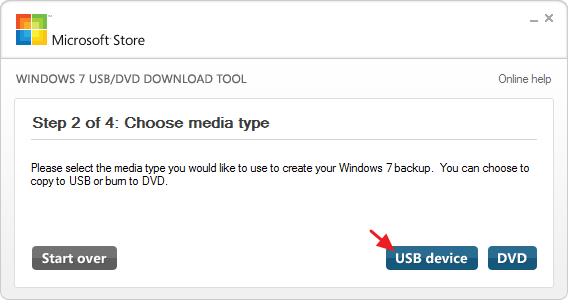How to Install any Windows OS from a USB Flash Drive?
This blog post contains detail-to-detail instructions on how to to do a clean installation or upgrade installation of any Windows OS version you wish to run on your computer. This can somehow help you save more money since you can push through the entire process at home and without the help of any professional technician who will charge you with a little surprising price.
Step One: Create or Download an ISO for the Windows Installation Media
Prior to creating your USB installation drive, you’ll need to have your Windows installation media available as an ISO file. If you already have an installation DVD, you can use it to create an ISO file using ImgBurn or other software applications, a handy little free utility that’s been around forever. If you don’t have Windows installation DVD, you can download ISO files for Windows 10, 8, or 7 directly from Microsoft.
Note: You’ll also need a minimum of a 4GB flash drive to create your installer. Be sure to copy anything you want off of it, because this process will erase it. Once you have both your ISO and flash drive in hand, you’re ready to continue.
Step Two: Create Your Installation USB Drive with the Windows USB/DVD Download Tool
With your ISO file saved to your computer, your next step is to download and install the Windows USB/DVD Download Tool. The description on that page, on the actual download page, and on the tool itself talk a lot about Windows 7 and even XP. Don’t let that worry you. The tool works just fine for Windows 7, 8, and even 10.
Once you’ve got the tool installed, creating your USB installation drive is a pretty straightforward process. Run the tool and give it permission to make changes to your PC. Click “Browse” to locate your Windows ISO file and then click “Next.”
On the next page, click “USB device.” The tool can also burn the ISO to a DVD if you need that option.
Use the drop-down menu to choose the USB flash drive you want to use. If you haven’t inserted it yet, do that now, and then click the Refresh button. Once you’ve got the right drive selected, click “Begin copying.”
If your USB drive has anything already on it, you’ll next see a warning that it will be formatted and you’ll lose any data stored on the drive. Go ahead and click “Erase USB Device.” If you started with a newly-formatted USB drive, you won’t see this warning.
Now you just have to wait for the process to complete, which usually takes 15-20 minutes. The drive will be formatted and files copied to the flash drive.
When the process is finished, you can close the download tool.
If you take a look at the flash drive in File Explorer, you’ll be able to see the same files that you would if you opened the installation DVD.
And now that you have your installation USB drive, you can use it to start the computer on which you want to install Windows. You may have to navigate with the BIOS on the computer to allow it to boot from USB or to change the boot order so that it will boot from the USB first. You may even be able to use the disk on computers that don’t support booting from USB, but you’ll need to take additional steps to create a bootable CD.
Disclaimer: This information may or may not contain all the information you wish to have but this is purely based on my experience. To help you more especially when you encounter certain errors while doing the process, I recommend you to search related concerns in "Google" or watch videos on YouTube. Those work for me.
References:
How to Install Windows 7 and 8 using a USB Flash Drive. (n.d.). Retrieved October 16, 2017,
from http://tweaks.com/windows/39415/how-to-install-windows-7-and-8-using-a-usb-flash-drive/
O. (2016, March 09). Retrieved October 16, 2017, from https://www.youtube.com/watch?
v=Syao9wY5Adg










Comments
Post a Comment